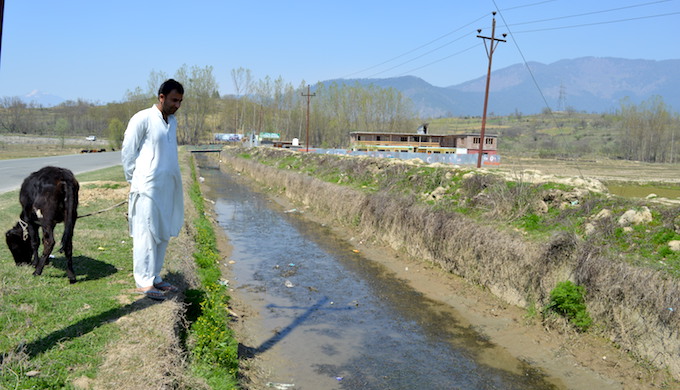Srinagar July 31: The relentless heatwave continued to scorch Kashmir on Wednesday, with temperatures soaring unprecedented levels triggering water scarcity at several places in the Valley.
The highest temperature was recorded in Kupwara at 35.3 degrees Celsius followed closely by Srinagar at 35.1 degrees Celsius, Qazigund at 33 degrees Celsius, Pahalgam at 30.8 degrees Celsius, Kokernag at 32.3 degrees Celsius, Gulmarg at 24 degrees Celsius, and Jammu at 36.2 degrees Celsius.
Despite the searing heat, the Meteorological Department has ruled out any significant relief in the form of substantial rainfall in the immediate future. The ongoing heatwave has exacerbated the drying of water bodies across Kashmir, leading to a water scarcity crisis.
In response to the dwindling water sources, the government has been providing potable water through tankers to various affected areas. The drying of rivers, lakes, and springs, which are lifelines for both agriculture and daily living, has triggered alarm among the residents and officials alike. The weather forecast for the coming days offers a glimmer of hope.
The Meteorological Department (MeT) said that the period from August 1 to 5 is expected to be generally cloudy with intermittent light to moderate rain and thundershowers in many parts of the Kashmir division and most parts of the Jammu division.
Further spells of rain and thundershowers are forecasted for scattered places between August 6 and 7, and isolated places from August 8 to 10. The region waits in anticipation for the forecasted rain, hoping it would bring much-needed relief without further exacerbating the challenges.
Meanwhile, The Kashmir Valley is grappling with a prolonged dry spell, leaving farmers in dire straits as they struggle to save their yearly crops.
The Agriculture Department of Kashmir has warned that an official declaration of ‘agricultural drought’ may be imminent if rain does not arrive by next week. Director of Agriculture Kashmir, Choudhary Mohammad Iqbal expressed concerns about the ongoing dry spell’s impact on crops.
“The lack of rainfall is causing severe damage to the crops, and if the situation does not improve soon, the department may be forced to declare an ‘agricultural drought’ based on the evaluation parameters,” he said.
Iqbal said the department is closely monitoring all the parameters, and if it does not rain by next week, it may declare an agricultural drought.
The prolonged dry conditions have raised alarm among farmers and officials alike, with concerns growing over the severe impact on crop growth and overall productivity in the region.
Officials from the Irrigation and Flood Control (I&FC) department said the dry weather has led to a reduction in the water level of the Jhelum River and has affected about 10% of irrigation schemes. They said the overall water capacity of the Jhelum River has decreased by 30% compared to normal levels.
Director Agriculture previously said that while there was some moisture in the ground, the absence of rain in the coming week could negatively affect both paddy and vegetable crops.
Professor Dr Raihana, Chief Scientist with the Faculty of Agriculture at Sher-e-Kashmir University of Agriculture Science and Technology (SKUAST) of Kashmir, said the prolonged dry spell has caused stress to plants. “The extended dry conditions have led to burning tips on paddy crops and drying leaves on vegetable plants,” she said, adding that producing 1 kg of rice requires 3,000 to 5,000 litres of water.
Farmers said the lack of precipitation and above-average temperatures have adversely affected crop growth and development, which poses a serious threat to the region’s agricultural-based economy. Videos circulating on social media depict farmers showing their drying paddy fields and wilting saplings.
The meteorological department in Kashmir has forecast generally cloudy weather with spells of intermittent light to moderate rain and thundershowers at many places in the Kashmir Division and most areas in the Jammu Division from August 01 to 05.
As the prolonged dry weather conditions continue to challenge their livelihoods and the overall agricultural economy in the valley, farmers are anxiously awaiting relief from the hot and dry weather.



